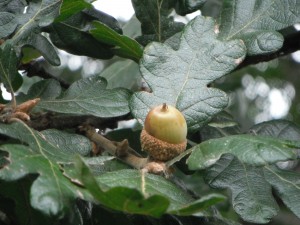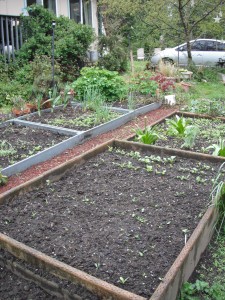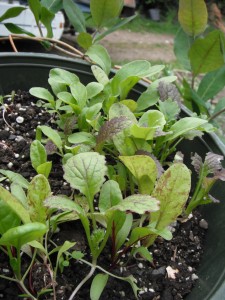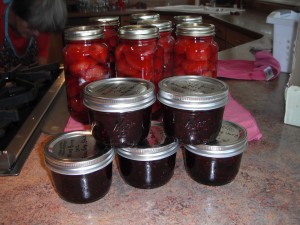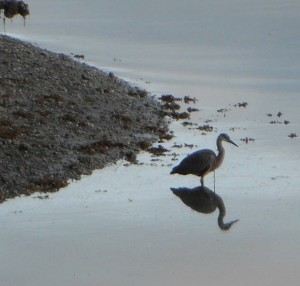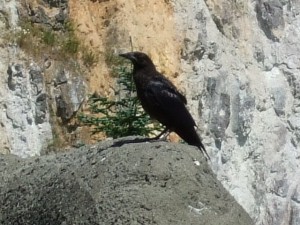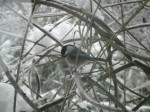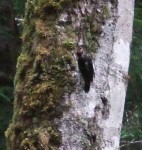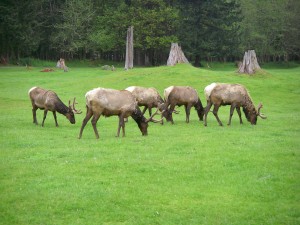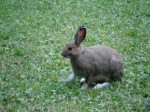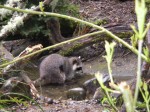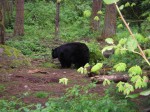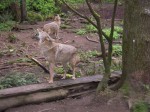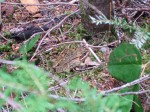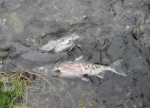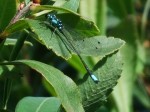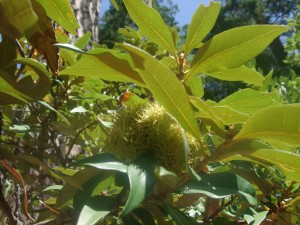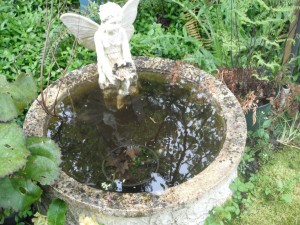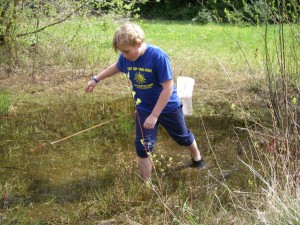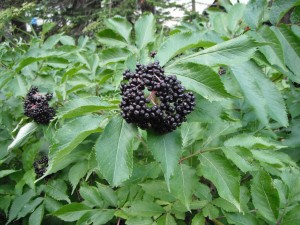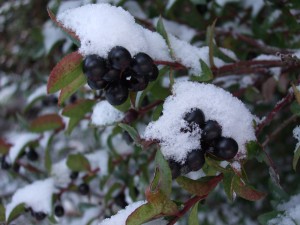Two of the top wildlife plants are oaks and pines. These trees produce large, nutritious seeds. It may seem strange that a tree could sacrifice so many of its seeds and still reproduce. But by strategically producing bumper crops in some years and very little in others, the trees provide an erratic food supply to limit the population growth of the seedeaters. Birds, squirrels and other small rodents disperse the seeds by caching them for later use. Forgotten seeds may sprout and grow into new trees.

If you have ever found a pile of cone scales under a Douglas Fir, it is a sure sign that a Douglas Squirrel has been at work!
The seeds of other conifers, such as true firs, spruces, Douglas Fir, hemlocks, larches, and cedars are also important food sources for many animals. Other deciduous trees and shrubs that bear nutritious seeds include: maples, birches, mesquite, beeches, alders, hickories & pecans, elms, hazelnuts and ashes.
Many herbaceous plants produce seeds that are eaten by wildlife. Although people may consider many of these plants weeds, they are often important food sources for many animals. Many landscape gardeners will find it very difficult to accept the idea of growing a “weed patch;” but those that are committed to sharing this planet with other species may be able to find a way to integrate it into their design. Try to stick with species that are native to your area and make sure to eradicate any non-natives that are considered noxious weeds in your state or county.
Most grass seeds are eaten by wildlife, especially cultivated crops such as corn, wheat and oats, as well as wild bristlegrasses (Setaria sp.) and panicgrasses (Panicum sp.).
|
High wildlife value weed seeds |
|
| ragweeds | Ambrosia sp. |
| pigweeds | Amaranthus sp. |
| knotweeds | Polygonum sp. |
| filarees | Erodium sp. |
| sunflowers | Helianthus sp. |
| lambsquarters | Chenopodium sp. |
| clovers | Trifolium sp. |
| Russian thistle | Salsola kali |
| doveweeds | Croton sp. |
| turkey mullein | Eremocarpus stigerus |
| tarweeds | Madia & Hemizonia sp. |
| deervetches | Lotus sp. |
| chickweed | Stellaria media |
| star thistles | Centaurea sp. |
| dandelion | Taraxacum sp. |
| sheep sorrel | Rumex sp. |
The above table lists several non-grass weed plants with seeds–arranged with the most valuable at the top. It is interesting to note that many of the weeds that are most valuable to wildlife are some of the most troublesome weeds. I often wonder if the weeds that pop up in my garden have been transported there by some wild creature.
Many wetland plants are important food sources for wildlife. If you are lucky enough to have a pond or other water feature/wetland in your landscape, you may want to include some of these plants. The plants listed in the following table include not only those with seeds that are eaten but plants that have foliage or tubers eaten as well. Wetland areas are very important to fish, amphibians, waterbirds, and several species of invertebrates.
High wildlife value wetland plants.
| Pondweeds | Potamogeton sp. |
| Bulrushes | Scirpus sp. |
| Smartweeds | Polygonum sp. |
| algae | |
| Widgeongrass | Ruppia maritima |
| sedges | Carex sp. |
| spikerushes | Eleocharis sp. |
| Wild rice | Zizania aquatica |
| Wild millets | Echinochloa sp. |
| cordgrasses | Spartina sp. |
| naiads | Najas sp. |
| Wild celery | Vallisneria spiralis |
| duckweeds | Several genera |
| Saltgrasses | Distichlis sp. |
| Horned pond weed | Zannichellia palustris |
| Burreeds | Sparganium sp. |
| waterlilies | Nymphaea |
| arrowheads | Sagittaria sp. |


